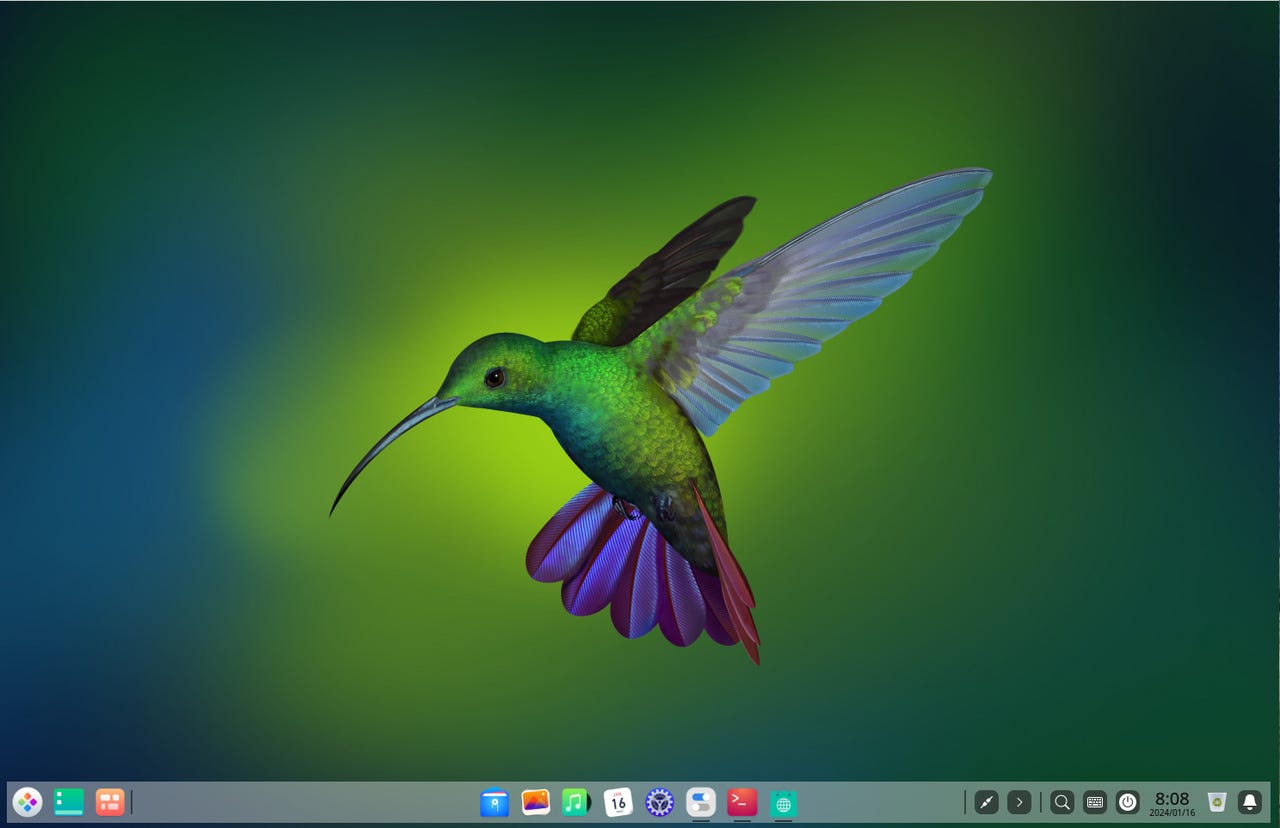
































The Deepin desktop environment makes blendOS a thing of beauty.
blendOS is available now to download and install for free.
I've seen just about every attempt at making something unique with Linux and, every once in a while, something really leaves a mark. This time around, that something is blendOS.
blendOS is an immutable Linux distribution that, as the developer says, is "a seamless blend of all Linux distributions" and it does a great job of almost achieving that very thing.
Also: What is immutable Linux? Here's why you'd run an immutable Linux distro
You see, blendOS includes numerous package managers (from other distributions). You'll find pacman (from Arch), apt (from Ubuntu), and blendOS's own blend tool. You'll also find the podman container runtime, which adds another layer of usability to the OS and the flatpak universal package manager. To add to this cornucopia, there's also the blendOS Web Store, which allows you to install web apps (or request your favorite web apps to be added).
Where blendOS misses on this mission is that you won't find Fedora's dnf or openSUSE's zypper package manager.
What this all means is that you'll not only have numerous ways to install software, but you'll have a multitude of applications from which to choose. If an app isn't found in the apt repositories, it might be found in those that serve pacman. When all else fails, there's flatpak. And if you want to run a containerized version of an operating system, you can choose from Arch, AlmaLinux 9, Crystal Linux, Debian, Fedora 38, Kali Linux, Neurodebian Bookworm, Rocky Linux, Ubuntu 22.04, and Ubuntu 23.04.
Also: The best Linux laptops
On top of all this, you can choose a version of blendOS with the desktop environment that best suits you, from GNOME, KDE Plasma, XFCE, Cinnamon, Deepin, MATE, and LXQt.
For my review, I chose the Deepin desktop and am glad I did. This version of blendOS is as beautiful as it is flexible. But, under all that beauty and ability, is there an OS that can be used by the masses, or is this an operating system geared for a specific user type?
Let me answer that question for you.
Given I chose the Deepin desktop, what I saw initially had me fooled into thinking this could be a great OS for the masses.
I was wrong.
I'm not saying that the average user couldn't work with blendOS because they certainly could. Thanks to Deepin desktop, everything is instantly familiar and easy to work with. But the second you open the Launcher, you'll find the base installed apps do seem to cater to one particular type of user...the developer.
Also: I revived three ancient computers with ChromeOS Flex, and you can too
Out of the box, there's Electron 25, Hardware Locality Isotope, Neovim, Qt Assistant, Qt Designer, Qt Linguist, Qt QDBus View, Qt V4L2 test Utility, Qt V4L video capture utility, and Software Token, which are all very developer-centric. What you won't find are apps like LibreOffice, GIMP, or Thunderbird...productivity tools for the rest of us.
And the fact that blendOS adds the podman container runtime tool makes it even more clear that developers are the intended audience.
Consider this. Its developers describe blendOS as "...an immutable distro that lets you make containers of other distros." So, yeah, this isn't a Linux distribution that you'd install for your grandparents or children. blendOS is an operating system for those who know what they're doing and don't want their platform of choice getting in the way of doing it.
Deploying containerized operating systems is incredibly easy with blendOS.
As an experienced Linux user, in minutes, I was installing applications with tools from other distributions, adding web apps with ease, spinning up containerized operating systems, and just generally doing things I couldn't do on other distributions without some serious effort.
You can easily install any number of web apps with blendOS.
On top of all that, I had the Deepin desktop to enjoy, which is (as always) a thing of beauty.
Also: UbuntuDDE weds Deepin Desktop with the latest Ubuntu for a beautiful, user-friendly distro
In the end, if you already love Linux, blendOS is a distribution that will bring you much joy. If you don't know Linux, I wouldn't make this your launching point into the world of open-source because you might quickly become confused by the sum total of blendOS's parts.
 Tags chauds:
technologie
Tags chauds:
technologie